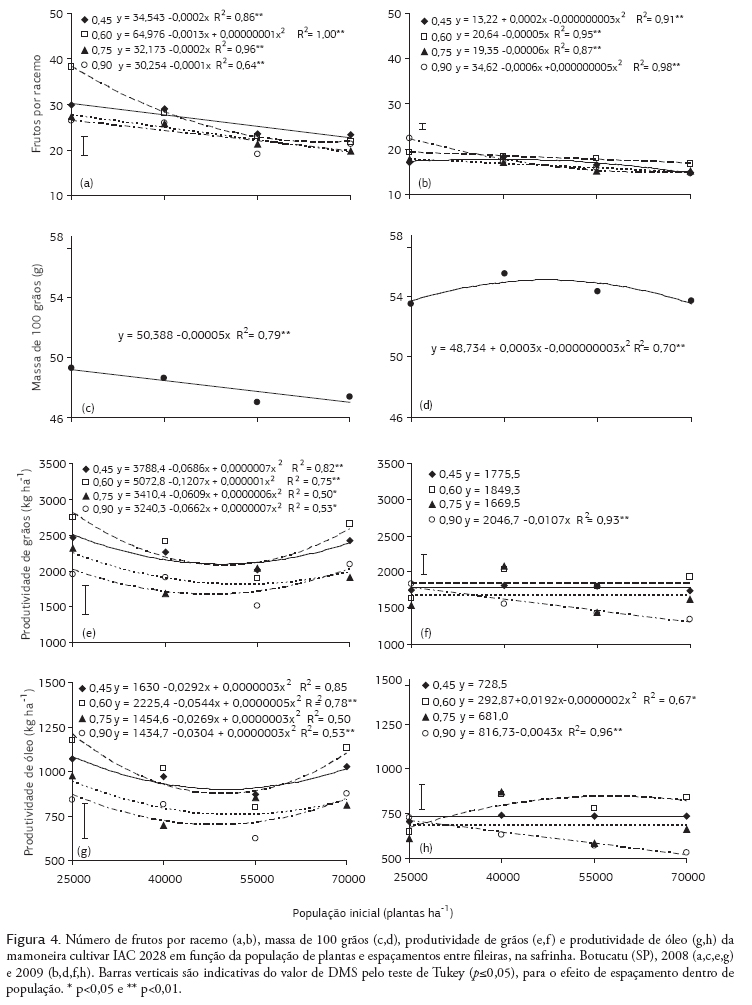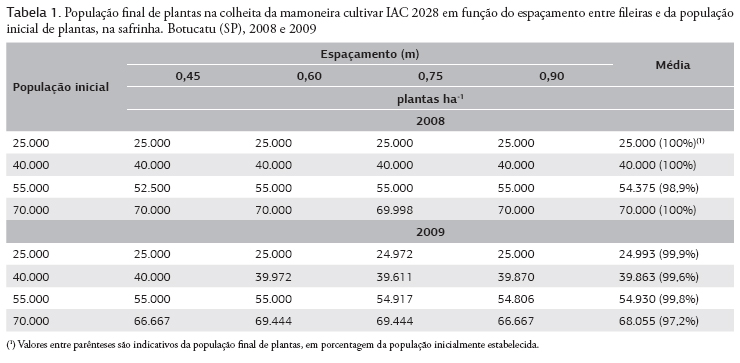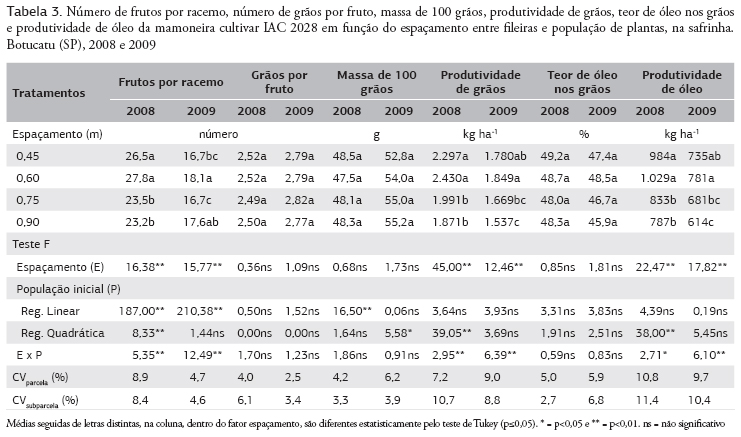With the release of new low height castor bean cultivars with indehiscent fruit and suitable for mechanized cultivation, it is necessary to establish adequate row spacing and plant population for these materials. Thus, the objective of this study was to evaluate row spacing and plant population influence on the performance of castor bean cultivar IAC 2028 in out-of-season cropping. The experiment was carried out in 2008 and 2009, on a Haplorthox in Botucatu county, State of São Paulo, Brazil. A randomized complete block design was used in a split-plot scheme with four replications. The plots were composed by four row spacings (0.45, 0.60, 0.75 and 0.90 m) and subplots comprised four initial plant populations (25,000, 40,000, 55,000, and 70,000 plants ha-1). The largest row spacing provided the lower plant growth, number of racemes per plant, number of fruits per raceme, grain and oil yields. The highest plant populations provided smaller aboveground dry matter, stem diameter, yield components, and higher height of the first raceme insertion. Grain yield was little affected by plant populations, mainly in small row spacings. The smallest row spacings provided higher grain yields of castor bean cultivar IAC 2028 in out-of-season cropping, being recommended 0.45 and 0.60 m row spacings.
Ricinus communis; spatial arrangement; plant density; grain yield; oil content







